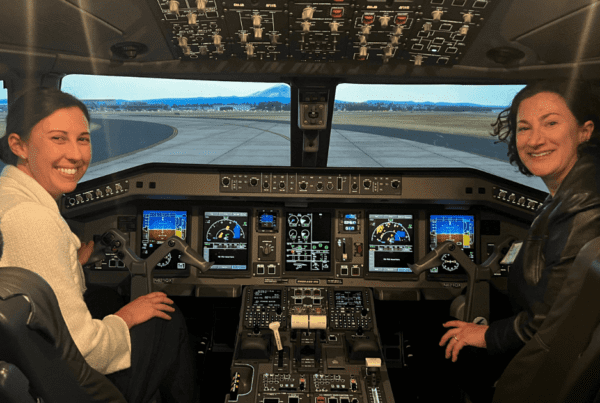Highlights | Saving a life in-flight
- During a flight, a first-year medical student Joey Seuferling stepped up to help a passenger in distress.
- UW School of Medicine’s curriculum prioritizes early clinical experience.
- This hands-on clinical experience gave him the confidence and skills to help the other responders.
Joey Seuferling has always wanted to be able to help others when needed. This summer, on a flight to Denver, Colorado, the opportunity arose in an unexpected way.
Seuferling had just finished his first year of medical school at UW School of Medicine in Spokane and was on a flight to Colorado when he noticed a passenger across the aisle was in distress.
“He started coughing and turned very pale,” Seuferling says. “The passenger next to him called for a flight attendant.”
Seuferling leaned across the aisle.
“I asked if he was OK, but he was going in and out of consciousness,” says Seuferling.
The flight attendant asked if there was a doctor on board, and a physician responded, as did a paramedic seated in front of Seuferling. When the physician learned Seuferling was a medical student, he requested his assistance.
“He asked me to monitor the patient’s vitals,” explained Seuferling. “The patient had very low blood pressure and his speech was slurred. I assisted with the neurological assessment and monitored his oxygen saturation and respirations.”
The fact that a first-year student was able to offer this kind of timely help is due to significant changes the School of Medicine has made to its curriculum.

Joey Seuferling
Early clinical exposure prepares students
“Over the past decade, medical schools have changed and evolved their curriculum, resulting in students having more hands-on experience and earlier exposure working with patients,” says Darryl Potyk, MD, associate dean for the UW School of Medicine and chief of medical education for Eastern Washington at the UW School of Medicine – Gonzaga University Health Partnership.
At the School of Medicine, this hands-on experience happens between the first and second years of medical school through coursework, service learning and Rural Underserved Opportunities Program (RUOP) summer research projects, says Potyk.
“At UW School of Medicine, during their first week at medical school, students learn to take medical history and conduct physical exams. During the next 18 months they build and refine those skills,” says Potyk. “It’s never too early to learn to be comfortable with patients, and it’s immensely powerful for our students.”
Due to the COVID-19 pandemic, Seuferling worried that he’d lose the opportunity for that hands-on experience.
“But the staff at UW School of Medicine in Spokane told us they were going to do everything they could to allow us to safely see patients,” Seuferling says.
The reason for that is simple.
“These skills cannot be taught virtually,” says Potyk. “Consequently, during COVID-19 we devoted a lot of time and thought about how to safely allow students to interact with patients. We’re seeing benefits that are greater than we anticipated. The students are reminded every week that they’re going to make a difference in the lives of their patients.”
Building confidence and setting students up for success
Seuferling was grateful he was able to draw on those skills to help his fellow passenger.
“The man was able to continue the flight and a paramedic met us when we landed and we debriefed him,” he says. “It felt really good to help. My training at UW School of Medicine in Spokane came into play and gave me confidence. This experienced confirmed that this is what I want to do.”
The physician on board the flight was impressed with the student’s skills and wrote to the deans at UW School of Medicine in Spokane commending Seuferling’s ability to calm the passenger and take his vitals, saying he believes the student has a promising medical career ahead of him.
“We’re incredibly proud that Joey stepped up,” says Potyk. “And we’re equally proud that our curriculum prepared him to step up.”
Guest Writer: Cindy Hval
Photo caption: Philip Myrtorp on Unsplash.


